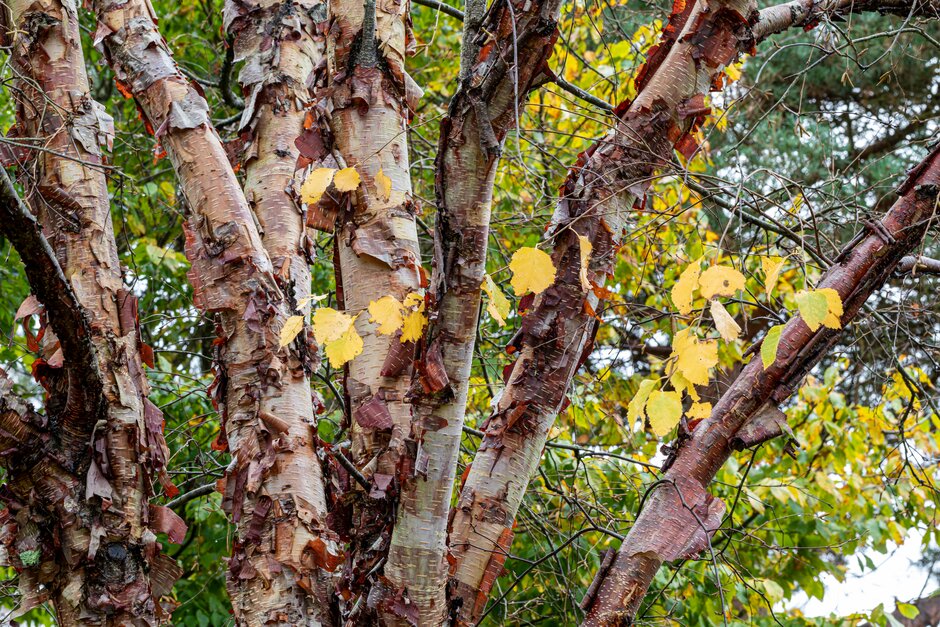Betula dauurica 'Maurice Foster'
Asian black birch 'Maurice Foster'
A medium-sized, often multi-stemmed tree to about 12m. Young trunks and branches have white bark peeling off in curls to reveal the reddish-brown underside; on older trees the trunk becomes dark brown and corky. The foliage is broadly oval, toothed and bright green; male catkins are yellow-brown and drooping, female ones green and upright
Size
Ultimate height
8–12 metresTime to ultimate height
20–50 yearsUltimate spread
2.5–4 metresGrowing conditions
Moisture
Moist but well–drainedpH
Acid, Alkaline, NeutralColour & scent
| Stem | Flower | Foliage | Fruit | |
| Spring | Yellow Brown Green | Green | ||
|---|---|---|---|---|
| Summer | Yellow Brown Green | Green | ||
| Autumn | Yellow Brown Green | Green | ||
| Winter |
Position
- Full sun
Aspect
South–facing or West–facing
Exposure
Exposed or Sheltered Hardiness
H7Botanical details
- Family
- Betulaceae
- Native to GB / Ireland
- No
- Foliage
- Deciduous
- Habit
- Bushy
- Genus
Betula can be deciduous trees or shrubs, usually colouring well in autumn and often with striking white, pink, or peeling brown bark; separate male and female catkins open before or with the leaves in spring
- Name status
Accepted
How to grow
Cultivation
Grow in moderately fertile, moist but well-drained soil in full sun
Propagation
Propagate by softwood cuttings in summer or by grafting in winter
Suggested planting locations and garden types
- Architectural
- Cottage and informal garden
- Low Maintenance
Pruning
Pests
May be susceptible to birch borers, leaf-mining sawflies and aphids
Diseases
May be susceptible to honey fungus, a tree rust and powdery mildews
Get involved
The Royal Horticultural Society is the UK’s leading gardening charity. We aim to enrich everyone’s life through plants, and make the UK a greener and more beautiful place.
